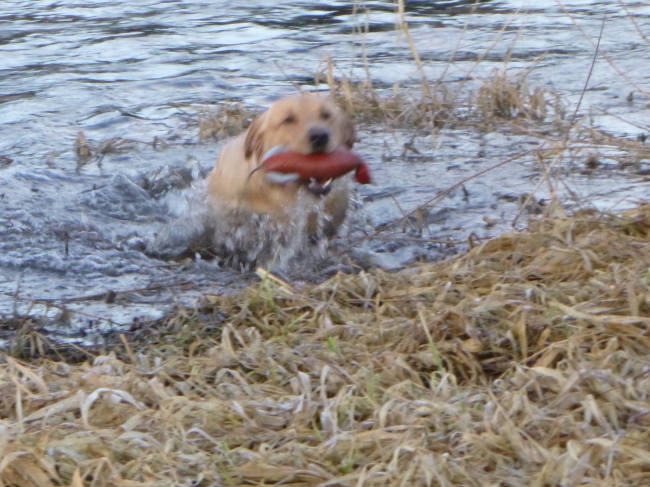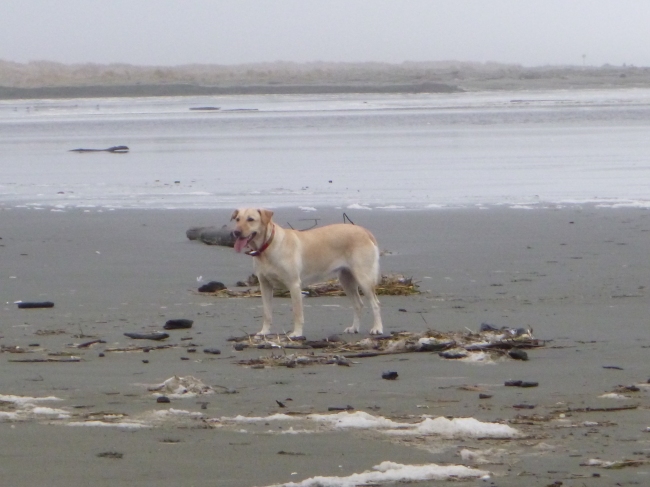I hope everyone is having a nice spring! If you’ve been putting off some of your training goals until the weather improved, it’s time! Get out there!
I wanted to give you an update on Peck’s training. He’s almost 2 years old now. Each day on our off lead walk I see him getting more and more bold and adventurous. Where he used to maintain about 20 to 30 yards between us, he now ventures far beyond normal gun range. His excursions always bring him back to me, but his range is getting waaaaay beyond what we want in the field this fall.
So, now I am at a crossroads. I can either use control via voice/handsignals (with e-collar enforcement if necessary) OR I can try to use my influence to teach him to work closer. If you know me, you already know that I’m going to choose the influence method. I want Peck to use every available braincell to find birds. I don’t want him worrying about what I want and whether or not I’m going to shout a command or nick him with the e-collar. I want his entire being concentrated on locating birds.
This is a dynamic that I think about a lot: Control vs. Influence. I think sometimes we humans allow our egos to take over and push a lot of control on our dogs just to make us feel like we are in control of something. It’s not that control is such a bad thing. We NEED control in many situations in order to keep our dogs safe, but often we see this need for control creeping into other areas where it isn’t nearly as important and the act of controlling the dog seems more like an ego-booster for the handler than a necessity for the dog’s well-being.
Back to the field: How am I going to keep Peck from enormous circles that take him far out of range? Much of this can be accomplished with the “Big Rubber Band” technique that I wrote about in an earlier post. You can check that out here if you’re interested.
Another variation on the “big rubber band” is to wait until he is halfway into the next zipcode and slip into a hiding spot where he will have to really look hard to find me. I have to be careful with this trick though because if used too much it can lead to Peck losing trust in me.
Carrying a retrieving bumper in my pocket will keep him close too, because he wants to retrieve and that keeps him close to any potential retrieving action. the downside of this approach is that he eventually loses his focus on finding birds because he’s such a retrieve-o-maniac. Like other techniques, it can only be used in small doses. The same be said of the dummy launcher. It keeps the dogs extra attentive to me because they’re waiting for me to shoot a bumper rather than searching for birds.
Planting live birds for them to find is another trick we use. It’s important to pay attention to wind direction when planting the bird so the dog doesn’t pick up the scent right away and run straight to the planted bird. The set up and approach should be such that the dog always finds the bird while he is working well within range.
All these little tricks (and others) are good ways to influence the dog to work within range. There are plenty of methods to achieve this with control, but I think that by exercising too much control we lose something important. We can keep a dog in range with e-collars and check cords and loud voice corrections, but none of these are things we really want to use while actually hunting. Most of you have probably heard the guy who can’t go more than ten steps in the hunting field without screaming at his dog. I don’t know about you, but I try to put as much distance as possible between myself and that guy.
The good news for me and Peck is that we have until September to get all this worked out. That will be plenty of time. With enough time and patience and a good pair of boots I think we can accomplish almost anything!
Slack Leads to you all!































